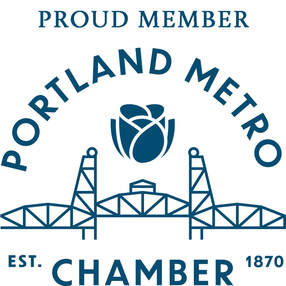|
Following is not easy. It requires patience, technique, frame, and balance. Unfortunately for follows, most classes are setup in a way that teaches leads new patterns every week but they do not teach follows the technique on how to follow. Following is very different from leading in that the follow should not memorize patterns and should only focus on dancing and feeling their partner's lead. Here are a few tips on how to accomplish this:
1) Your basic is your default! The lead's job is to redirect your energy in different directions but you will continue to step onto your 1 and 5 or 2 and 6 depending if you're dancing on1 or on2. 2) Do not try to figure out what your partner's going to do, instead feel. This is why we never teach patterns to follows. Instead of trying so hard to figure out what they are going to do next, relax and feel to see which direction they are sending your energy. If you don't feel it on time, it's probably because it was lead incorrectly or... 3) Do not brake your frame! Frame is what helps us communicate with our partner. If you brake your frame then you break the communication line and there's no easy way for your partner to redirect your energy. 4) Dance! Move! Don't stand still! Don't forget to dance and have fun. Keep moving, don't just stand there waiting for them to make the next move. 5) Always keep your hands available. Do not release their hand unless they release yours, do not give them a hand if they did not request it. 6) Do not rely on your partner for balance or strength. Follows, you want to BE INDEPENDENT, well here is your chance. Learn the proper technique so you can spin on your own and move on your own. Don't rely on your partner to keep you balanced or to push you around. You'll become a much lighter follow if you don't rely on your partner. Also, you'll have more fun because now you'll be dancing instead of always waiting for them to move you. 7) And similarly to #6... Keep your own timing. Don't rely on your partner to keep you on time. You should be listening to the music as well, and you should be stepping on the right count. This is a tricky one because sometimes your partner is not on time. If that happens you have the option of putting your partner back into time without them realizing it (that's another topic on it's own) or following whatever timing they're using. HOWEVER, this does not mean you shouldn't know where the correct timing is and you should always attempt to stay on time on your own. Want to improve your following and dancing come and check out our classes Vitalidad Movement Arts Center. Written by Carolina Rahima
3 Comments
|
Details
Archives
April 2024
Categories |
|
ABOUT
Our mission is to provide the residents of Portland Oregon with a wide variety of the highest quality movement arts classes all in one location.
Our vision is to become a gathering place for our community, spreading the values of health, longevity, and inner peace, and happiness.
Vitalidad means vitality and longevity in Spanish and is the theme of our movement center. We aim to improve people's lives and improve our community.
This business is more than just a dance studio; it is a movement arts center offering classes in many types of dance, and fitness. It is also involved in community outreach activities; partnering up with non-profit groups to achieve common goals of improving our community.
- VMAC
Our vision is to become a gathering place for our community, spreading the values of health, longevity, and inner peace, and happiness.
Vitalidad means vitality and longevity in Spanish and is the theme of our movement center. We aim to improve people's lives and improve our community.
This business is more than just a dance studio; it is a movement arts center offering classes in many types of dance, and fitness. It is also involved in community outreach activities; partnering up with non-profit groups to achieve common goals of improving our community.
- VMAC

 RSS Feed
RSS Feed
